
Guide to Visiting the Navajo Nation in the Southwest
Page, Arizona might be known for its incredible natural landmarks - including Antelope Canyon, Horseshoe Bend, and Tower Butte - but these sights are actually property of the Navajo people. The Navajo Nation is the largest reservation in the United States and covers over 27,000 square miles of land, including iconic destinations such as Lake Powell Navajo Tribal Park, Monument Valley, National Monument, and Window Rock, AZ. The Navajo reservation covers more land than Rhode Island, New Jersey, Connecticut, and Delaware combined. The territory is considered one of the largest land areas allocated to a Native American jurisdiction within the states.
The Navajo, who have for centuries called themselves the "Diné", are a self-governing nation with their own sets of laws and traditions; however, the tribe allows non-members to enter the territory so that the mystery and beauty of their world-famous landmarks can be experienced by all.
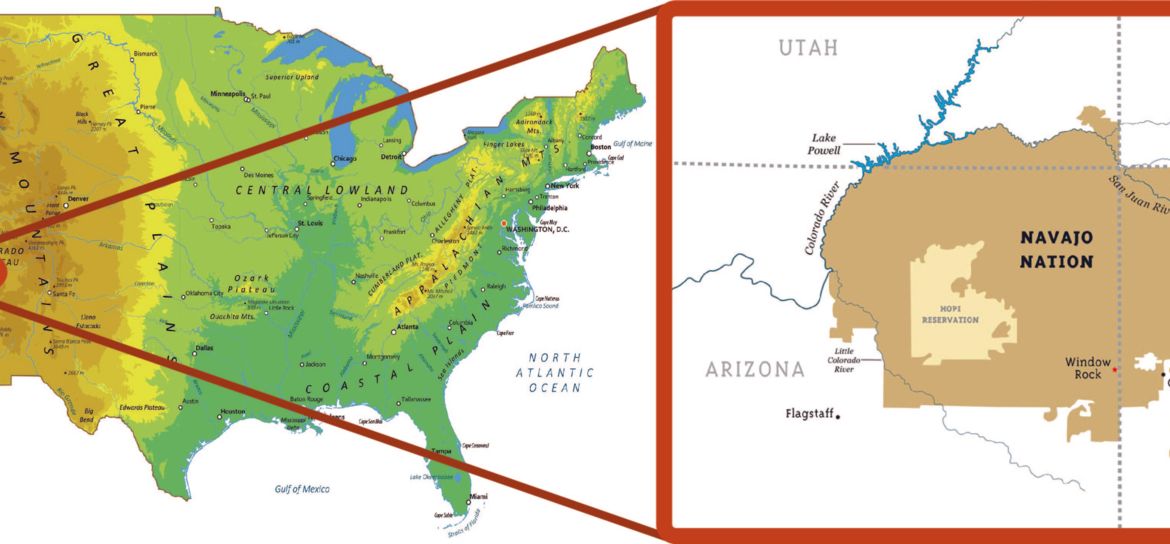
Where is the Navajo Nation
The Navajo Nation is located in the Southwest United States within the states of Arizona, New Mexico, and Upper Utah. There are many regions of the Navajo Nation within driving distance of Las Vegas, with drive times ranging between 5 and 7 hours.
To visit Tuba City, Page, or Kayenta, take the I-515 southbound (bypass Boulder City) and continue on Road 93 to Kingman, Arizona. Take the I-40 eastbound and exit at Flagstaff, Arizona. From Flagstaff (or if you are beginning your journey from Flagstaff) , you can take any exit to find Access Road 89, which leads to all three destinations.
To reach Window Rock and Fort Defiance, take exit 357 in Lupton, Arizona, then proceed north on Route 12 for 25.2 miles.
To find Chaco Canyon and the Bisti Badlands, take exit 20 in Gallup, New Mexico, then continue north on Munoz Blvd to Highway 491, then remain north.
Navajo History & Culture
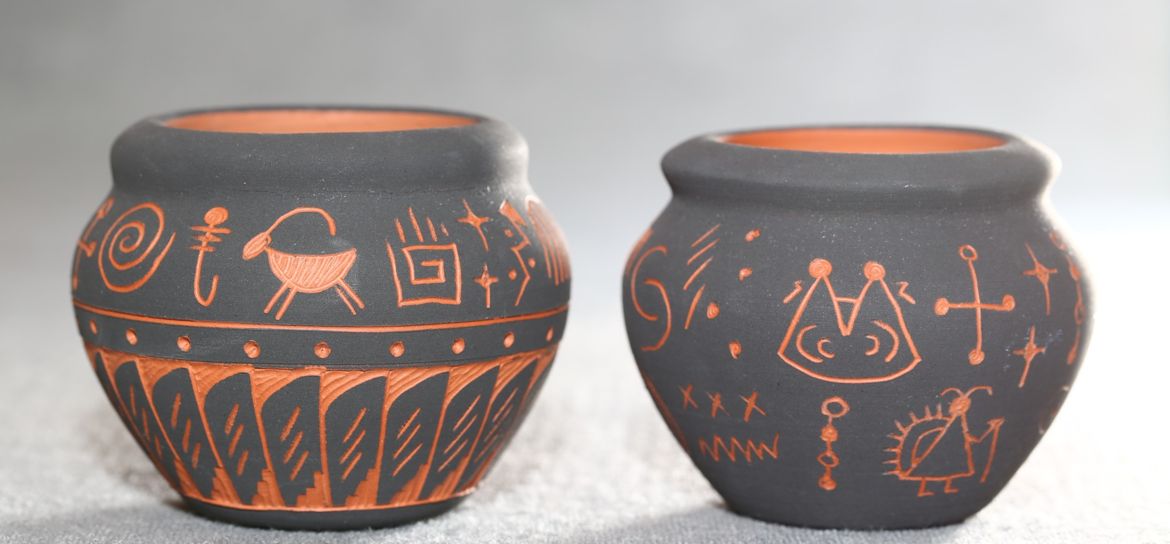
It is not explicitly known when the Navajo migrated to the Desert Southwest, but various archaeological accounts have placed the tribe in the region as early as 900 A.D. In the 1500s, Spanish explorers came upon the Navajo and overtook the region. Soon, disease brought by the Spaniards decimated the Navajo people, wiping out several tribes.
Between 1863 and 1866, over 10,000 Navajo people were forcibly removed from their tribal lands by the United States government. Groups of Navajo were made to travel on foot up to 450 miles from modern day Arizona to eastern New Mexico with nearly no food, water, and under blazing heat. At least 200 Navajo died during these forced "marches", and countless others suffered debilitating health impacts and violent repercussions.
Despite the immense historical hardships, the Navajo Nation flourishes to this day, their culture still deeply rooted in ancient tradition. The Navajo still take incredible pride in their sacred ceremonies. Some ceremonies teach invaluable lessons about living responsibly and some celebrate life achievements. On their land, the Navajo people still maintain "hogans" (pronounced "ho-guns"). Hogans are considered sacred to tribal members and have served as family dwellings as well as ceremonial dwellings. The Navajos still speak the language they've known for hundreds of years. The Navajo language is considered one of the most complex and difficult to learn. While close to the Apache language, it has no relation to other Native American languages.
Things To Do on the Navajo Reservation
While visitors are not permitted to enter the Navajo Reservation itself, there are plenty of Navajo Nation activities and tours in the nearby area. Guests can tour some of the most impressive canyons and nature destinations in the country, from world-famous destinations like Antelope Canyon and Monument Valley, to hidden gems like Tower Butte and Lake Powell.
Antelope Canyon
Antelope Canyon is one of the most sought-after natural landmarks in the world. This mystical slot canyon is a favorite for photographers and tourists alike due to its otherworldly corridors and rippling canyon walls. Antelope Canyon tours can be achieved in just a day’s time and are available year-round.

Monument Valley
Lovers of Western films are sure to recognize Monument Valley. These massive buttes scattered across the desert landscape are the backdrop of dozens of movies, including modern films like Forrest Gump and the HBO remake of Westworld. Tourists looking to visit Monument Valley can travel between these enormous rock formations by car, bicycle, or even on foot.
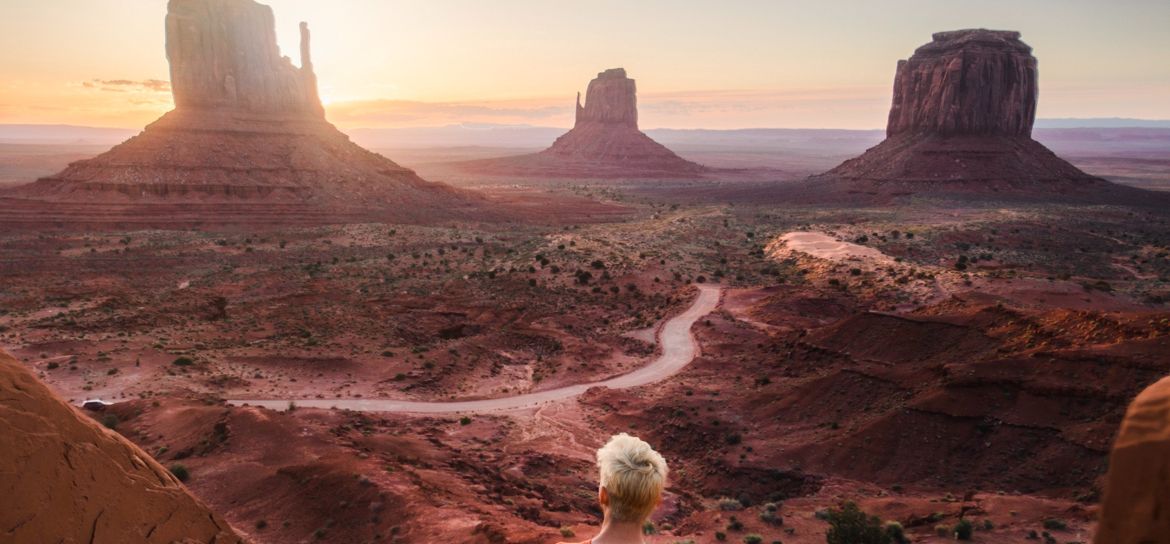
Canyon de Chelly
The Canyon de Chelly National Monument is a scenic park located within Navajo tribal lands. The park features natural landforms like the 800-foot-tall Spider Rock spire as well as the ancient ruins of Pueblo villages, now called White House Ruins and Mummy Cave.

Tower Butte
Set against the stunning Arizona desert landscape, Tower Butte is a colossal natural landform that resembles a skyscraper made of pure stone. This formation was created by millions of years of water erosion in the region. Today, visitors to Page, Arizona can see Tower Butte from the ground - or better yet - land directly atop its surface on a helicopter tour!

Horseshoe Bend
Horseshoe Bend is far more than just a section of the Colorado River - this raging water has carved the surrounding canyon into a near-perfect circle! Visitors to Horseshoe Bend can park nearby and walk right to the canyon's edge to see the river below - or it can be seen from the sky on a Horseshoe Bend helicopter tour.
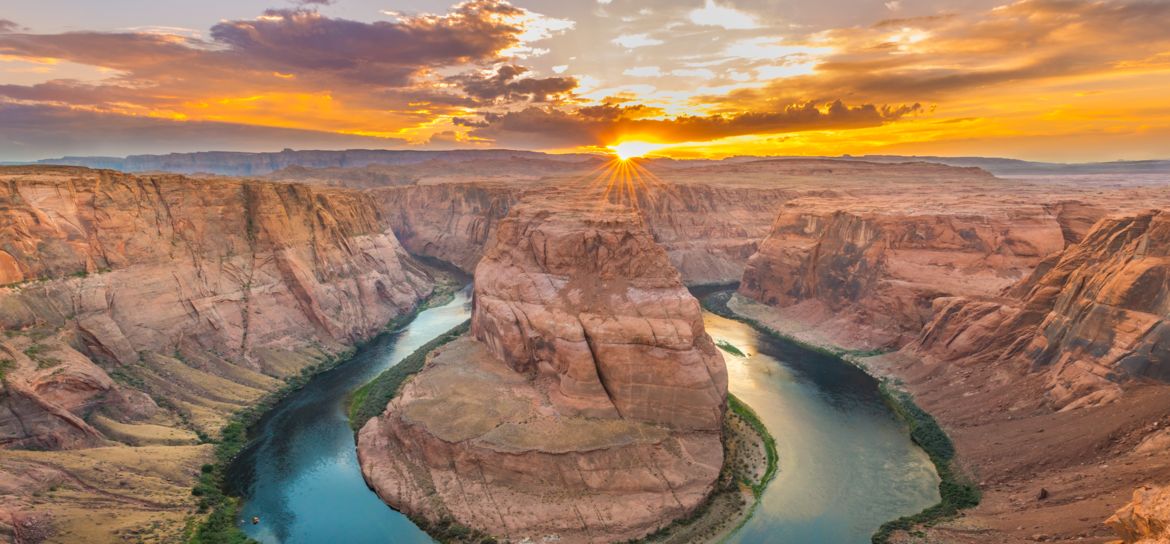
Lake Powell
Looking for some relief from the desert heat? Lake Powell is a manmade body of water that offers a variety of watersports like paddleboarding, kayaking, and jetskis. If you're in the mood to relax, the beaches are always available to soak up some sun. This magnificent lake is even more beautiful seen from the sky on a helicopter tour or airplane tour.
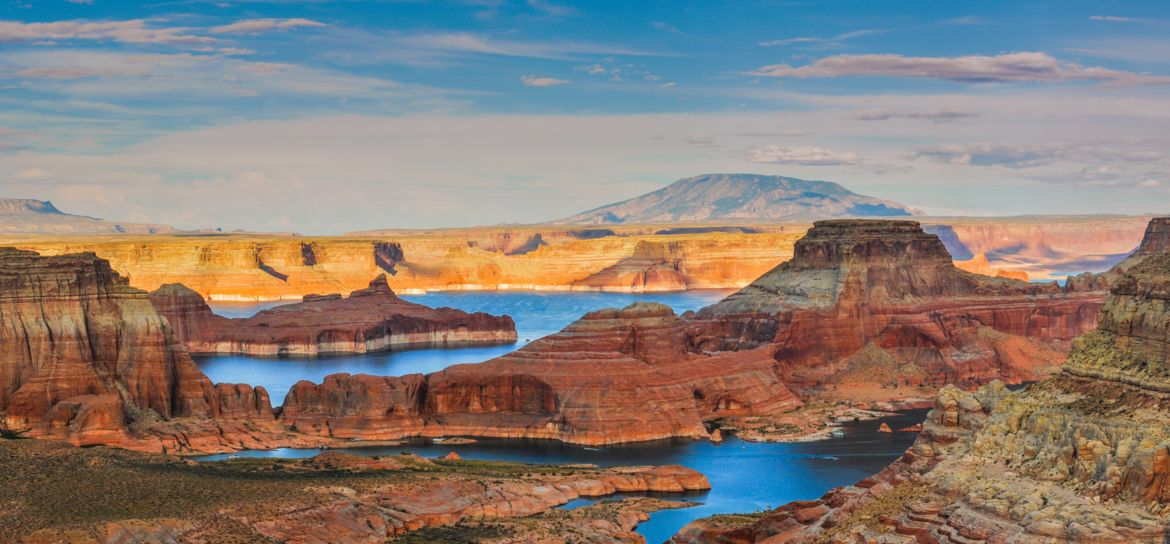
Where to Stay
If you plan to stay in the area for more than one day, there are fourteen Navajo Nation hotels nearby. In Arizona, there are hotels in Window Rock, Chinle, Kayenta, Tuba City, and Page, as well as one located in the Monument Valley Tribal Park.
If you're looking for an experience more connected to the earth, there are also campsites available with permits in these Arizona locations. Contact the Navajo Parks and Recreation department for more information about permits and camping rates.
For the ultimate Navajo experience, visitors can rent Navajo hogans for overnight use. These genuine traditional dwellings are owned by local Navajo families - some even offer food and hiking opportunities. These hogans are accessible via the Antelope Hogan Bed and Breakfast in Page, Arizona.
Tours of the Navajo Nation in Arizona
In modern day, the Navajo Nation economy relies heavily on tourism. Fortunately, demand to visit Navajo lands is consistently high due to its containment of such world-recognized landmarks as Antelope Canyon, Tower Butte, Rainbow Bridge, and the nearby Horseshoe Bend. While non-natives are forbidden to enter Navajo Nation territory without a permit, the tribe does allow Papillon to transport passengers from Las Vegas and the surrounding area to the reservation for touring. In fact, Papillon is the only tour operator that is approved to land atop Tower Butte. Guests to the area can also embark on a guided tour through Antelope Canyon, led by a knowledgeable Navajo that will relay ancient legends and point out unique rock formations within the canyon. Browse Antelope Canyon tours from Las Vegas and experience the magic of the Navajo Nation for yourself!